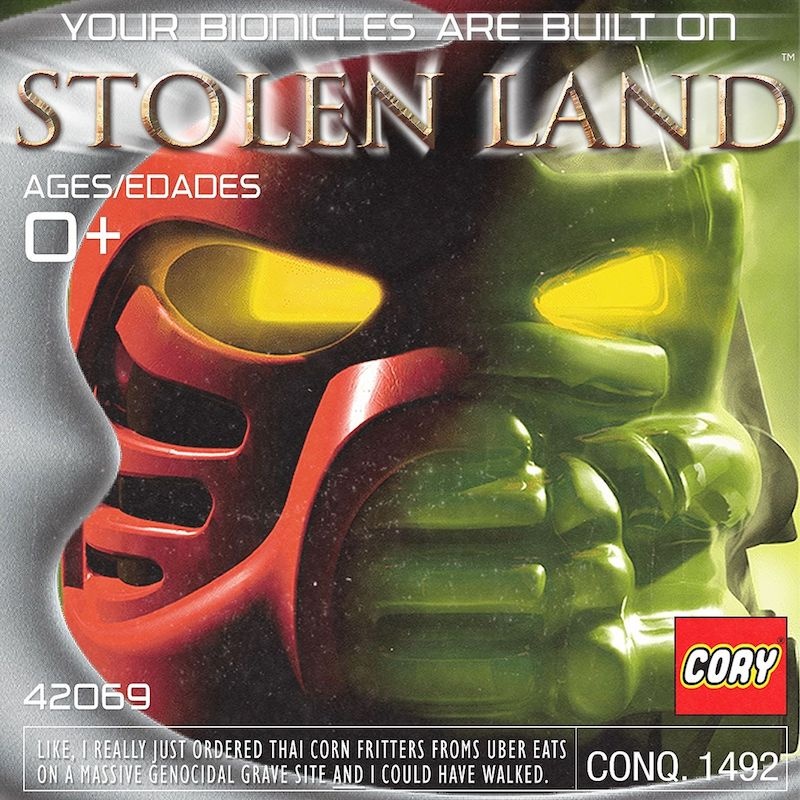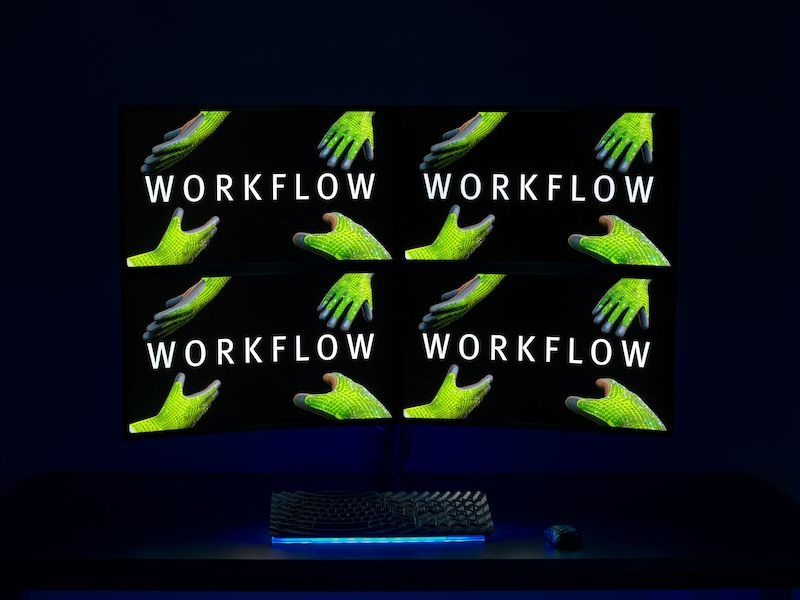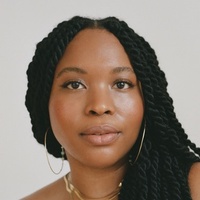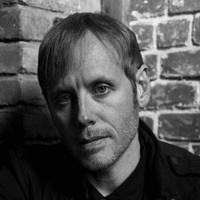On creating your own entry point
Prelude
Jenson Leonard (b. 1990, Detroit, Michigan) is an artist whose work takes form out of the collapsed context of the internet, often critiquing its slippage of meaning and techno-capital excess while pointing out its attraction at the same time. He holds an MFA in Creative Writing from Pratt Institute, and has completed residencies at Obracadobra (Oaxaca, Mexico), Squeaky Wheel (Buffalo, NY) and Pioneer Works (Brooklyn, NY). He teaches in the Media Study Department at the University fo Buffalo.
Conversation
On creating your own entry point
Visual artist Jenson Leonard discusses experimenting with form, learning what you're trying to say or not say, critiquing the systems around you, and transcending your technical abilities.
As told to Greta Rainbow, 2305 words.
Tags: Art, Beginnings, Education, Process, Success, Politics, Identity.
Your recent solo show at Pioneer Works, called Workflow, feels like an assembly of collected aesthetics and ideas, from Aria Dean’s “Notes on Blacceleration” to comically cringe corporate solidarity statements related to #BLM. The centerpiece is an animated Michael Jackson mask that recites lines like, “It’s easier to imagine the end of the world than to unsubscribe from my OnlyFans.” What coalesced in your life to make this artwork happen?
Poetry, memes, and heavy theory are all where I live. Those are big stars in the overall constellation. I’d been making memes as Cory In The Abyss for the longest while, beginning in my post-undergrad years, being out in the world as a self-identifying poet and submitting poems to various online publications and getting rejected and rejected and rejected.
I had all this downtime from busing tables or working at little Belgian waffle shops, and I was looking at my phone. It’s around 2015, 2016, so that pivotal election period where memes are an amazing frontier and currency for political awareness, political hashing out and conflict. Looking at memes as a poet, I was also looking at the writing, the rhythm, language. This guy Darren Weschler has a term called “conceptualism in the wild.” I identified [memes] as a clearly avant garde aesthetic practice while being completely independent or even ignorant of said practices. People were out there from various races, socioeconomic background, whatever, combining text and image on their phone, using free open source apps and text generators, and copy and pasting from Google Images and doing cut-up collage.

Cory In The Abyss meme
After making memes for a while, there was an audience shift within the context collapse. I started to attract an audience that is in the gallery. I’m meeting up with artists and art people in the city. I start to get into residencies, like a residency called Obracadobra in Oaxaca. I’m definitely past the point in my practice where I’m framing things as happenstance. This was the conceit. The conceptual gesture was, “What happens when you go ham as fuck with memes?” I’m fortunate that it worked out and that the people who saw it and got it didn’t question, “Is this art?” They just said, “I want this artistic practice to flourish.”
While in grad school, I started delving into moving image. The feed of social media—moving your thumb along from image to image to image—on its own is a kind of cinema. But it’s of disjunctive, disconnected images. There is a filmic quality to social media feeds. So in thinking of what the next move was, it made sense to make a longer, more durational work that has more space and demands more attention.
How did you develop the particular tone and style of Cory In The Abyss?
As I was discovering the space, the main page that I was like, “Wow,” was Lettuce Dog. I eventually DMed the admin and formed a friendship with Addy Borneman, a trans woman from Indiana. She was a little bit older than me, and I started making memes in the style of her work. I would publish to her page—I would basically ghostwrite—and she would share my page to help boost it, to build the following that I have. It sounds very transactional, but there was a magic and a time of that connection happening and having genuine over-the-phone conversation. We identified and had the same attitudes about politics and the world and moving through it.

Cory In The Abyss meme
Eventually I went to grad school, to Pratt for a creative writing MFA. In my second year, in 2019, I organized a panel called “Unreal Detournament” and I had Pratt fly Addy out along with another—in my opinion— legendary, pivotal, 21st-century vanguard artist, called Gangster Popeye. She’s been canceled, had kind of a social death…But she has this uncanny ability to create mimetic phrases. Bambi and Addy to me are the two artists who made me realize I don’t have to make poems. I don’t have to keep writing lyrical poetry, mimicking Amiri Baraka from the 1970s. It’s not the Black Arts Movement anymore. The most honest way that I can capture my voice is to be honest about the fact that I’m a netizen. My voice is bound up in my AOL instant messager screen names, my MySpace presence, my networked life, my formative years of using a computer socially. It felt like memes were the most honest space for me to express.
After a while I moved away from a simple picture in a white box with black text over it to the more ornate Photoshop and Illustrator-driven, collage heavy productions. There’s the idea of the “poor digital image”—you know, Hito Steyerl. I love the idea of putting so much effort and care and production into an image that is destined to be dispensed, swiped, passed, forgotten. What does the care in that gesture do?
Then you extended that level of care and production into a short video work. How did you make that technical leap?
I wanted to create something that was out of my skill set. One of my favorite qualities is when an artist switches it up and intentionally, chameleon-ically changes the form, the topic… Like Björk’s career. I admire when people pursue being uncomfortable. With [Workflow] I didn’t know a lick about ZBrush or Maya or Unreal or working in 3D. But I knew that the forms I wanted to create were computer-generated forms. At one point I asked online, “Does anyone know 3D that follows me?”—using my network in a really blunt way to not just form connections, but reinforce the connections that are already there. You hope that the people that find your work are similar-minded, have similar aesthetic and political concerns, and a certain kind of spirit. This artist—a “3D generalist” is the term—based in LA, Ned Stasio, reached out to me… I look at his portfolio and I see placements for Grimes, Travis Scott, Tame Impala, and I was just like, “Holy shit, this is what I’m looking for.” He even read “Notes on Blacceleration” to be on the same page. Before I knew it, we had a beautifully uncanny, floating Michael Jackson Halloween mask.

image from Workflow exhibition at Pioneer Works
At the exhibition opening, lots of people asked you if you used A.I. to make the work. But you didn’t.
I’m not one of those people who’s like, “A.I. can’t serve you.” Engage with the new thing. Figure out what you like about it. There’s a looming dark cloud of automation and jobs being replaced, and how those chips are going to fall…But at the same time, the A.I. art I’m seeing is totally derivative, DeviantArt on steroids, just fan fiction. In making [Workplace], I tried to include this sense of a climate of anxiety around artifice, machine, and otherness.
In terms of the textual part of the piece, I gathered internet language over the duration of my Pioneer Works residency. Three months of thinking of language in a cynical mode, after the onslaught of social media advertising and its phraseology—the jargons; the snappy, funny, quirky, quick, memorable, memetic phrases. Capitalism captures things, takes a bite out of it, and sells it back to you. I attempted to make something outside of the agreement around “recuperation” of creativity—not to say [Workplace] is un-recuperable, but it was made with the knowledge that your thing that you think is Teflon-sealed can be defanged right now. What do you have to do to make sure that its integrity remains? This language [of corporate advertising] is so abusive and slippery and errant—there’s triple entendres and quadruple entendres. Yet in that errantry of the language, there is something sensorial, there’s something coded that people understand and feel and are having a collective relationship with. That, to me, is an artistic process, a poetic process. That’s the occasion: making that relationship happen regardless of the toolset and the medium, or what you’re seeing on canvas or onscreen.

image from Workflow exhibitoin at Pioneer Works

image from Workflow exhibition at Pioneer Works
What does your research process look like?
I’m definitely a theory cell. I don’t read very much fiction or nonfiction or narrative-driven stuff. I like combing through theory, I like abstraction, and I like clusters of language that make me have to write them down. Right now I’m reading Franco Berardi’s And: Phenomenology of the End. Like, I can’t explain this shit to my parents.
What is your relationship to meme-making and social media now?
My memes aren’t necessarily topical. They’re about systemic structures. I don’t see myself making 70 more police brutality memes. I don’t have the bandwidth, I don’t see the efficacy in doing that. Making memes is not the same as making art that’s in galleries, or capital “A” art. A lot of people fall to the wayside from drugs. I’ve seen a lot of people get canceled or socially exiled. For a while, the growth of my page was contingent on bigger pages being benevolent enough to share my work. I’m not saying that that dynamic of exposure doesn’t exist in the wider art world and art market, but navigating and being reliant on that—in particular on social media—I don’t have the fortitude or the desire. In art spaces I have more room for expression and agency and then I can deal with the hierarchical elements. That grid, and the attention economy, and making for the attention economy, it felt like a hamster wheel samsara. I had a friend in grad school who said, “What I love about your page is you could so clearly make art, but you just don’t.” It was a neg or something. But after a certain point, the conceptual gesture of extremely dense and artful memes that live in a box started to feel literally like a box.
How do you navigate the art world as an artist with a non-traditional entry point and a practice that is tied up in critiquing existing systems?
I think of the phrase “borrowed institutionality.” This very cynical process of art world vetting, which is, for whatever reason, more thorough than vetting politicians or police officers. In order to have your work shown in some of these spaces, the kind of verification you have to go through is nuts. I also want to be mindful about diminished opportunity. Becoming a gallery circulating artist or even a blue chip artist is a model that is shrinking and becoming less and less viable. Of course, for me, coming from memes, there’s no profit involved in that. Maybe just social capital. I was not selling memes and now I’m getting paid to make video work. It is a 1,000% increase. And from what I’m told, the money is in painting and sculpting. But I’m not really commercial driven either. I have a guiding sense. Sense is the vibe, it’s a feeling that is like a certainty that does not have traditional Western knowledge—codified objectivity—to it. But you just know. That’s what guides me. I just knew with this piece that if I got to make it, it would be great. That was it. It was that simple a calculation for me.

Cory In The Abyss meme
What is your sense of how you will approach your new role teaching undergrads?
I’m looking forward to the ways that I can’t account for because they only come through experience: what I will learn from them, what I’m going to learn about people, about young people, about myself. I’m excited to impart my media literacy to them. It’s a 101 of, “You need to know this before you open up to TikTok in class on my time.”
I was a digital media arts major. On my first day of undergrad I could not follow this professor’s projected screen. I was watching his little mouse cursor click stuff and I kept having to raise my hand like, “What did you click? What the fuck are you doing?” I ended up withdrawing majors a week later and stumbled around until I found poetry and creative writing.
And now you’re literally in the media studies department, at the University of Buffalo.
Yeah. So I don’t want to be that professor. As a part of my process, there isn’t expertise. If someone wants to call me a master of what I do, that’s fine. But that’s not what I’m striving for. No mastery, certainty, expertise. It is all experimentation, testing, trying. I don’t have my shit together except in the sense of an exploration of beauty, sublime discovery, failure, critique. These are the things to me that comprise art: arriving at art, the process. I’m not really skillful at the programs. But that’s not why they hired me. I’ll never be a technician, and I don’t care to be. It’s more about like, what’s the thought behind the thing you did? How did you get to what you did? What are you trying to say or not say? That can embolden and enhance and transcend whatever technical prowess.
Jenson Leonard Recommends:
HD Footage of out of print Katsuhiro Otomo Art Books
Oaxaca, Mexico
Accepting the limitations of knowledge.
- Name
- Jenson Leonard
- Vocation
- visual artist
Some Things
Pagination



